May 13, 2021
Female Farmers: Este Garden
In a convivial old Austin neighborhood, Este Garden Farm Manager Anamaria Gutierrez and fellow female farmer Lea Scott are planting new roots at formerly Eastside Cafe’s legendary micro farm. They’re reviving idle land with community volunteer helping hands to support restaurateur Sam Hellman-Mass’s farm-to-table commitment at upcoming Este and current Suerte.
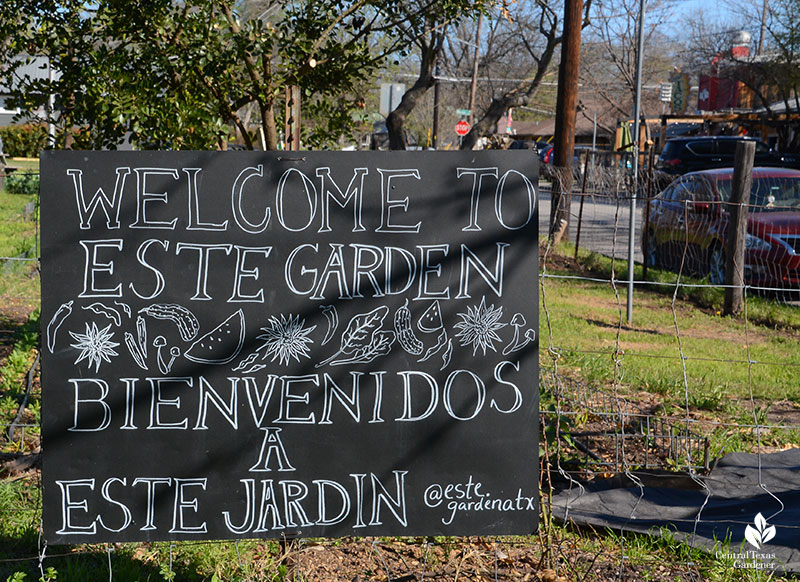
When Eastside Cafe closed its doors in 2019, its half-acre garden quickly gave way to a sea of Bermuda grass. On May 1, 2020, Anamaria came on board to bring it back to life.
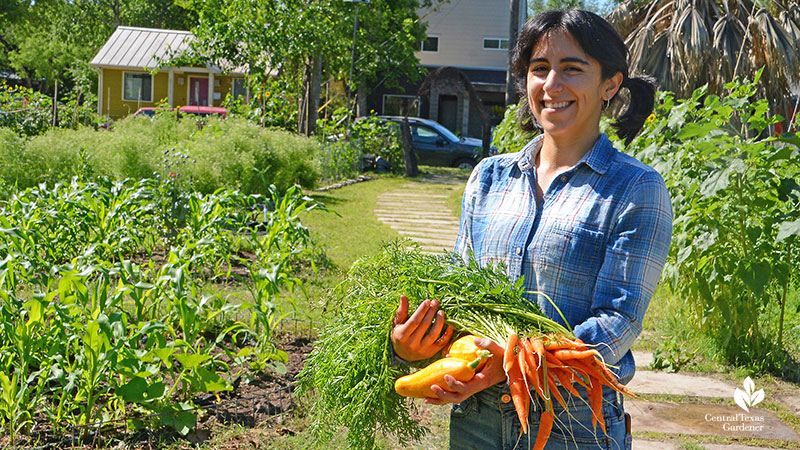
“We didn’t actually start that process until after the pandemic hit. The goal being to grow food for the restaurant Suerte and soon to be Este, but also to start connecting with the community and to keep this green space alive. That is very historic,” she said.
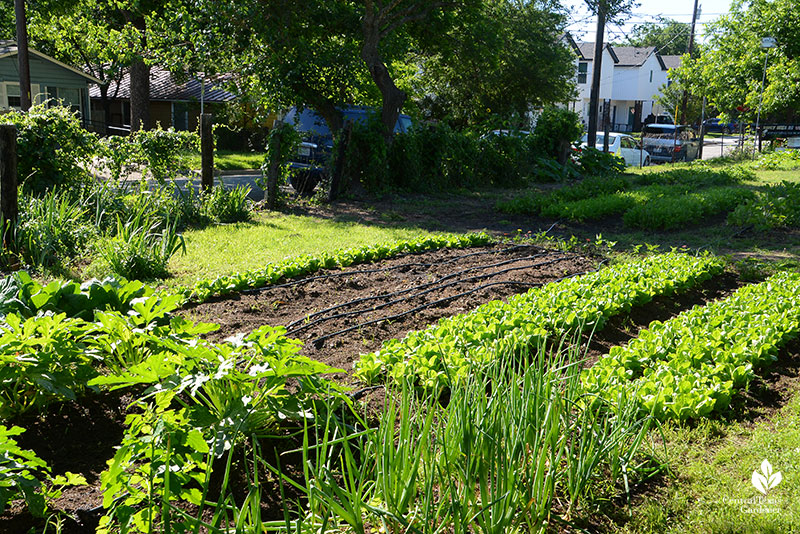
An East Austin resident, Sam biked in to Este where construction is in progress for the new restaurant (the old building was no longer structurally sound). Eastside’s owner Elaine Martin was pleased that Sam (who’s worked in restaurant kitchens since high school) stepped up.
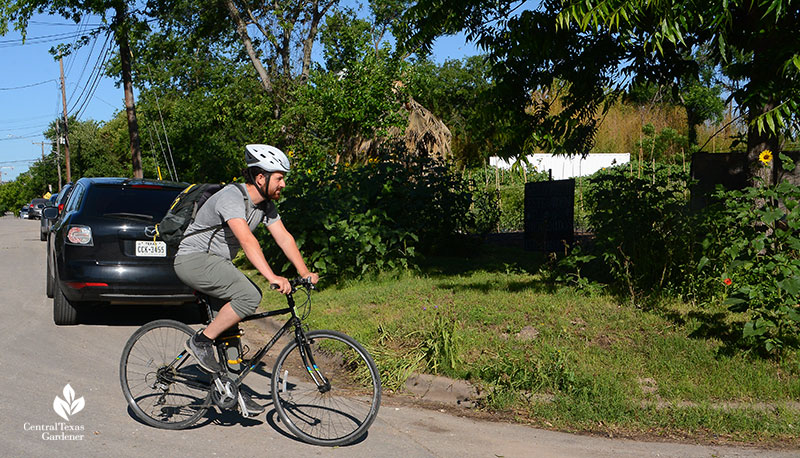
“It’s a really special attribute of the property that there’s not very many restaurants in Central Austin that have a half-acre garden. And nothing gets me more excited personally than having the opportunity to grow beautiful food,” he said.
When Anamaria did a fellowship at Urban Roots a few years ago, she met Lea Scott, farm manager at the time. “I looked at my community and thought about who inspires me, who has taught me so much, to bring on in here. And of course, the women farmers, specifically, were in mind. So, we are a women-powered farm,” she said.
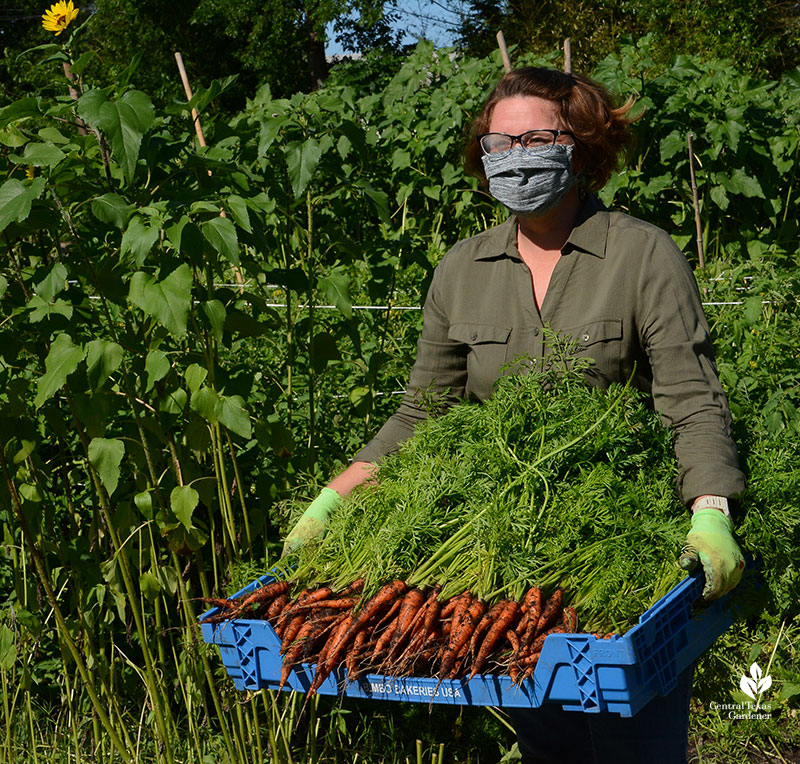
To eradicate Bermuda grass, they did occultation, a biological weed control technique that consists of covering the soil with black tarps and/or cardboard for three to six weeks. It’s especially fast-acting when it’s 90°! “This is like solarization, which uses clear plastic but that gets hotter. And so, it could possibly kill more organisms,” she said.
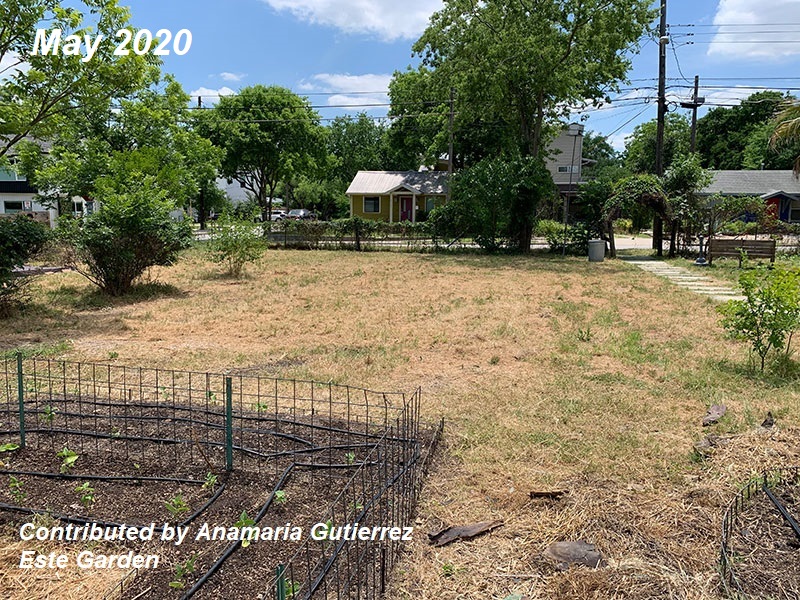
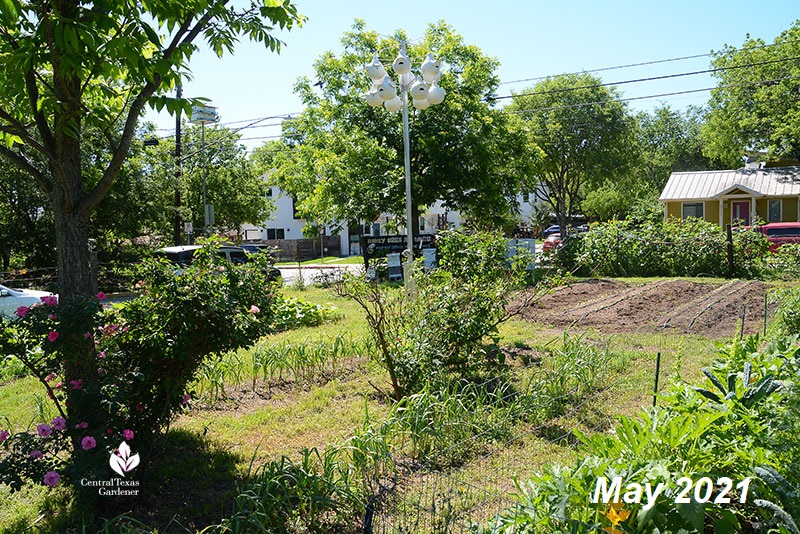
In their first year, Texas weather hammered them: record heat, drought, and the ultimate blow—February’s extended freeze that wiped out about 70% of their crops. But like all farmers, Anamaria and Lea took it in stride. Here’s the garden in March.
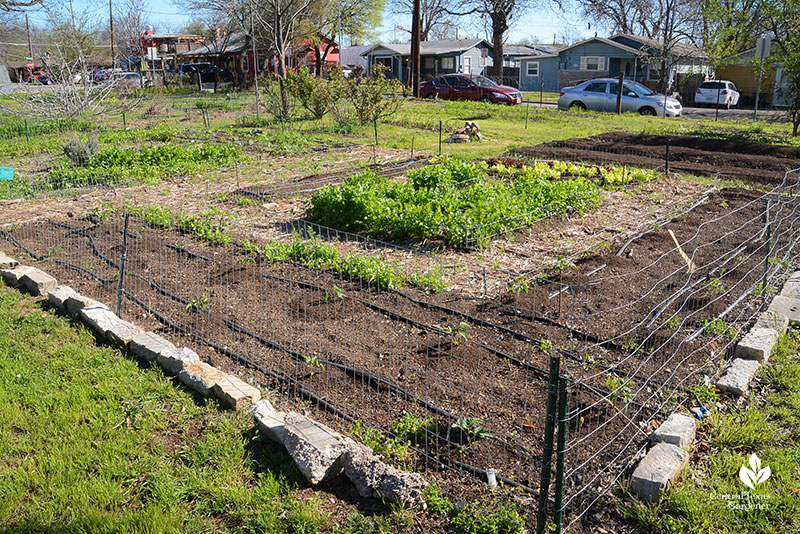
May
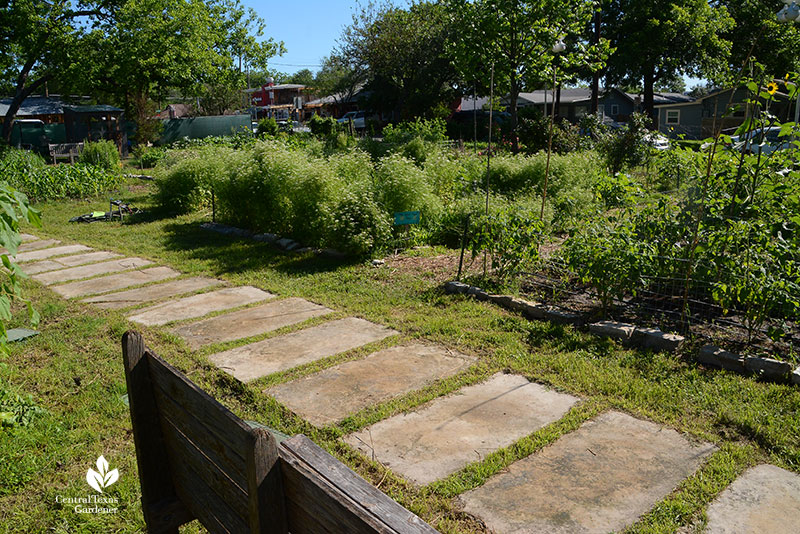
March
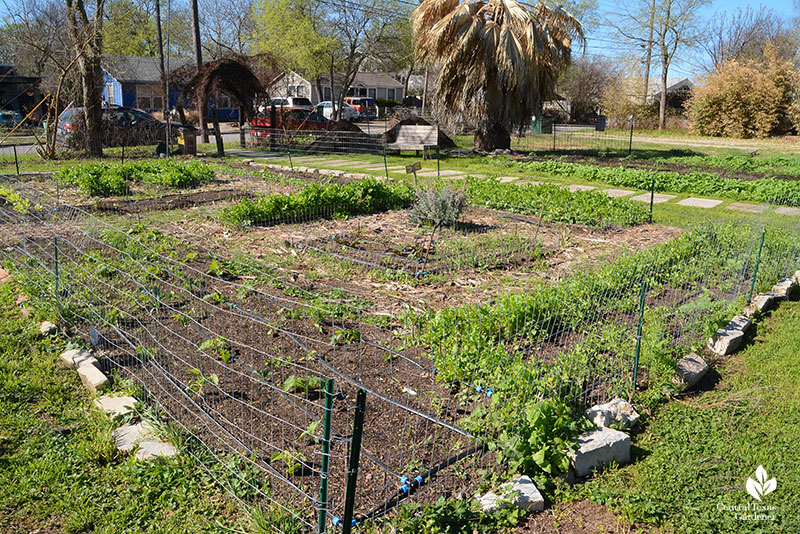
April
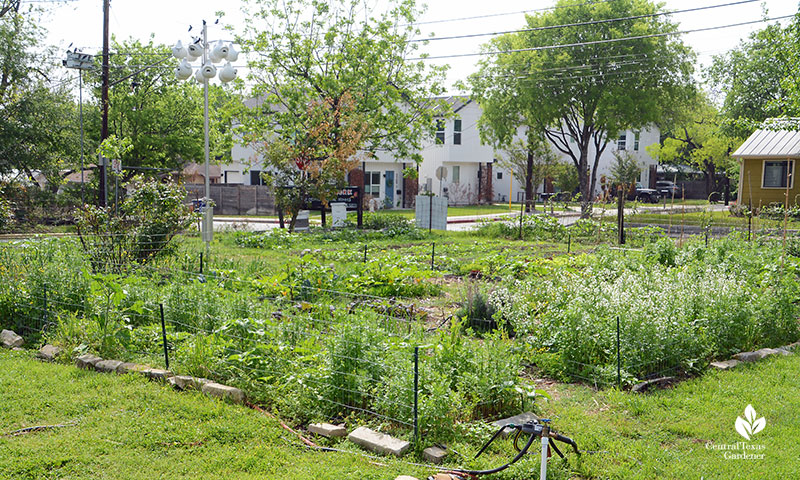
May
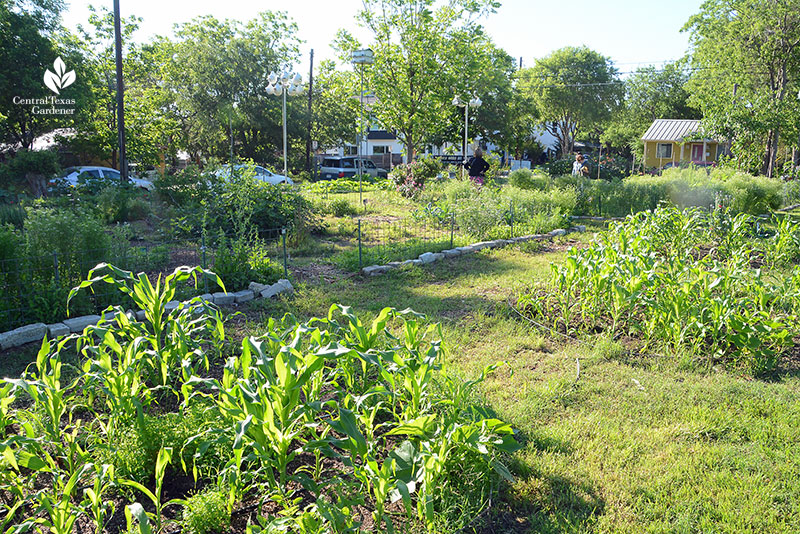
“We were so fortunate to have such rich soil. Of course, it’s because of Eastside Cafe growing food there organically for the past 30 years. This is like the most delicious smelling soil I have worked with,” Anamaria said.
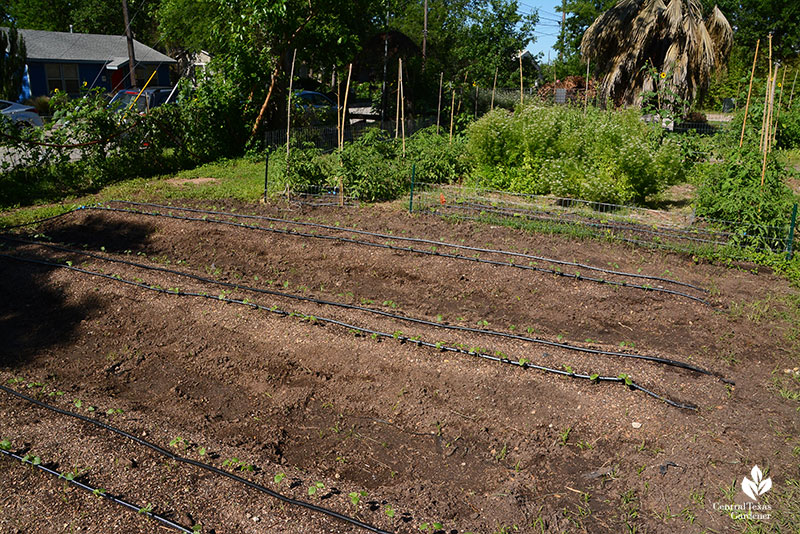
They plant some crops in rows. Newly planted zinnias edge this section to attract pollinators.
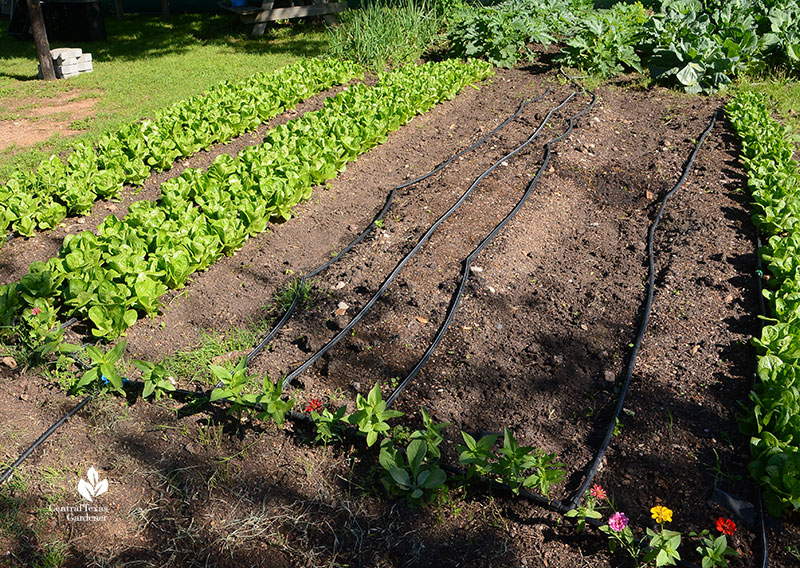
Others are enclosed in circles, rectangles, or squares. The big pile here is a future hügelkultur bed. Sam’s dad volunteered to remove dead tree stumps that will contribute to this water-conserving method.
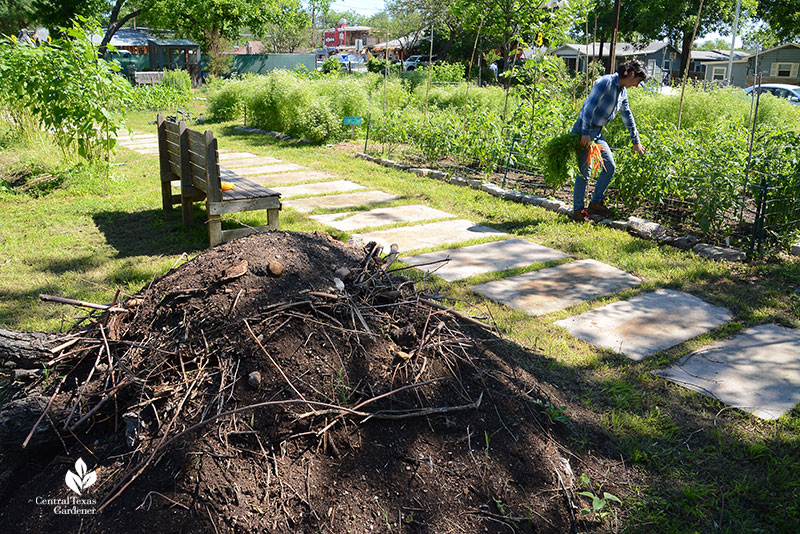
“We’re trying to make this a space that’s enjoyable for the community to come in and explore and learn and play. So, our sole purpose is not just to grow food but to make it also like an experience and a space for people to enjoy,” Anamaria said.
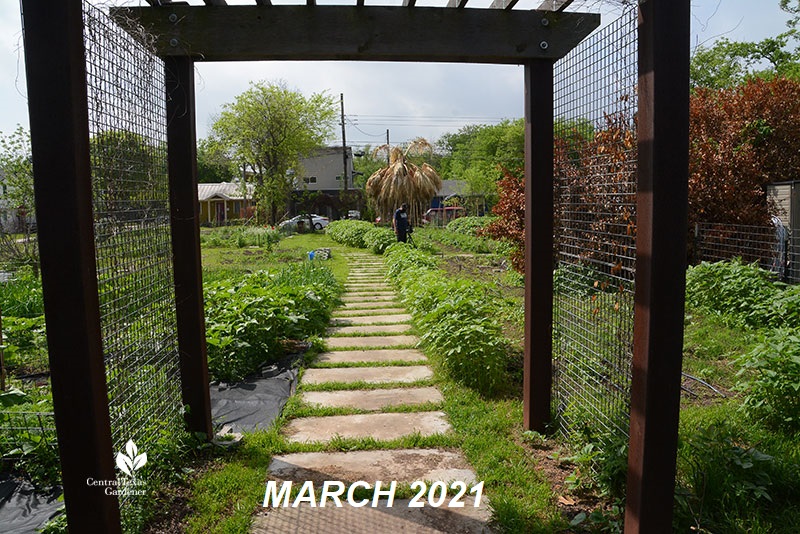
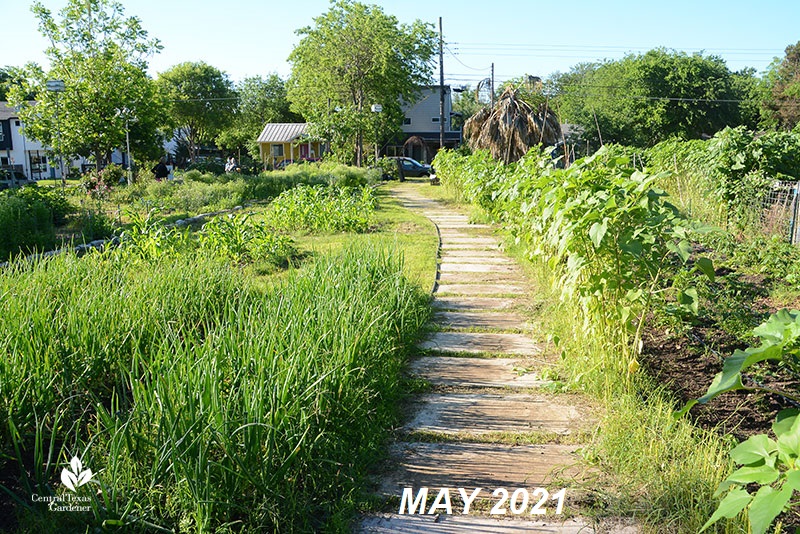
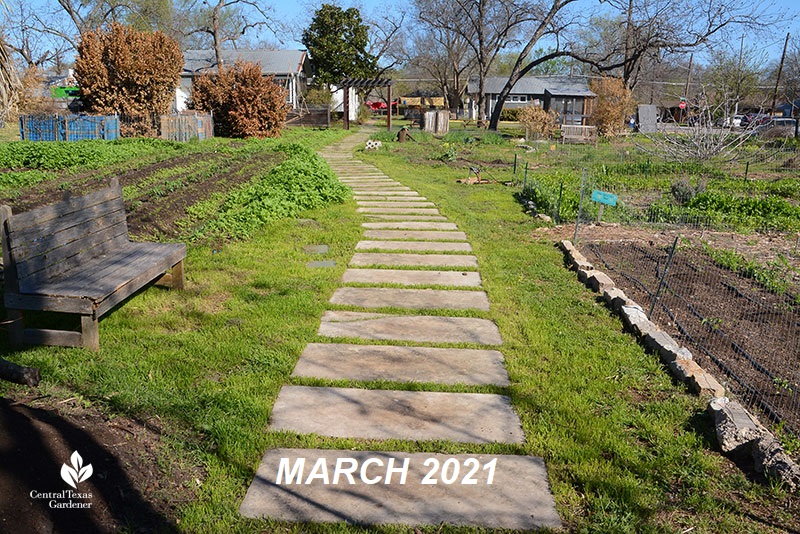
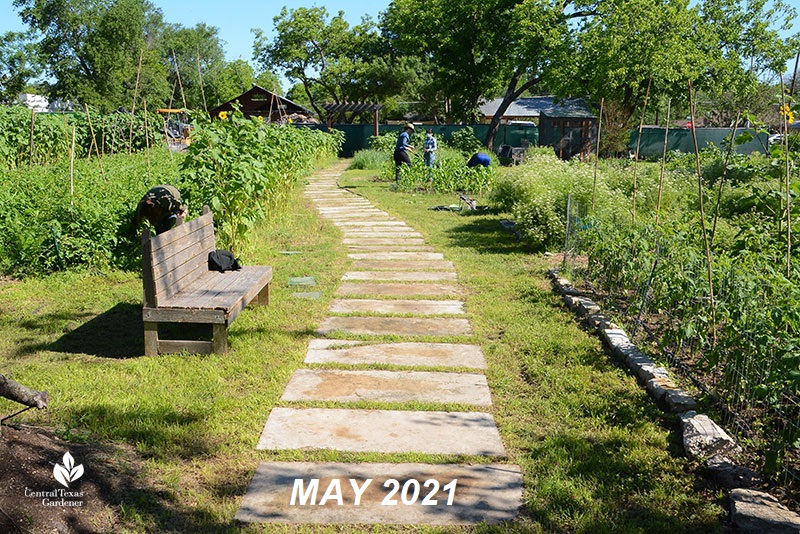
They grow from seed and transplants that Lea starts. In fall, she started Texas 1015 onions (named for planting date October 15th), which they transplanted in spring.
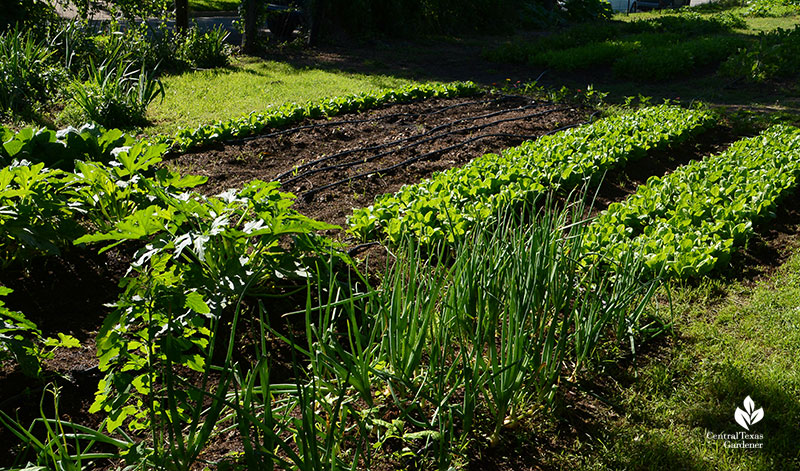
In a shade house, they hung bay laurel leaves after the freeze (their plants coming back like gangbusters) and to experiment with curing some of the onions.
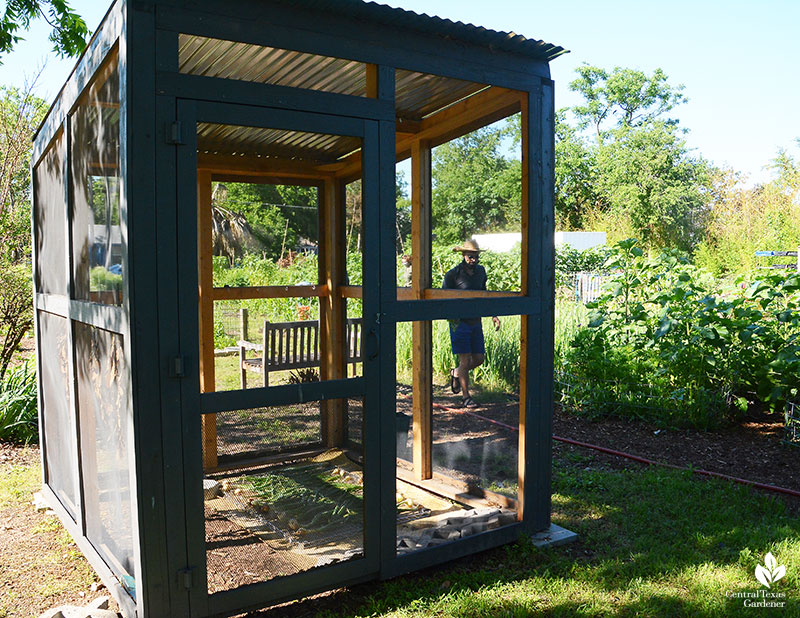
To maximize harvests in this small micro farm, carrots and tomatoes companion for a few weeks. “We first seeded the carrots and they’re aerating the soil really nicely. And then we transplanted tomatoes,” Anamaria said. Self-sown sunflowers will shade the tomatoes as the heat comes on. Here’s March.
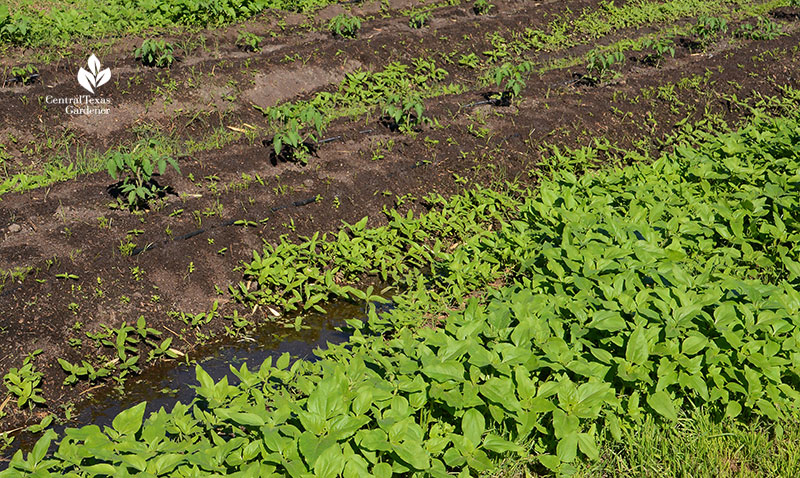
A few weeks later in April.
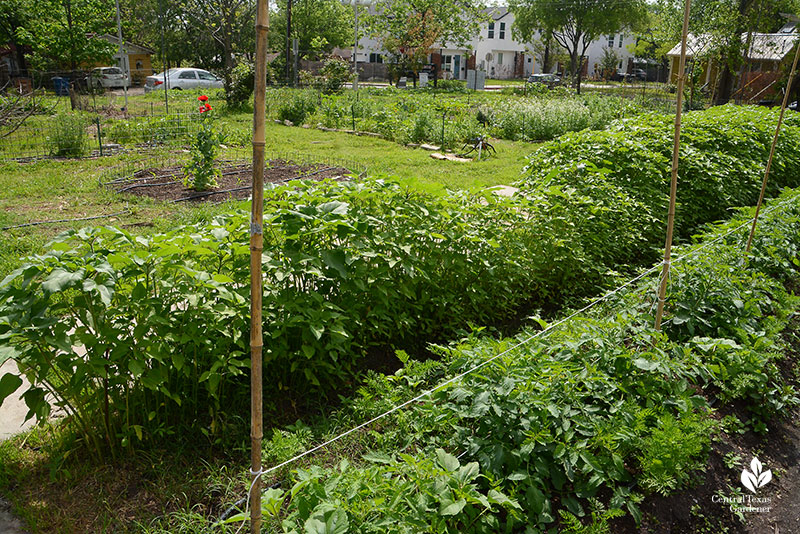
In May, Lea deftly plucks plate-perfect carrots from the rich soil as tomatoes ripen above them.
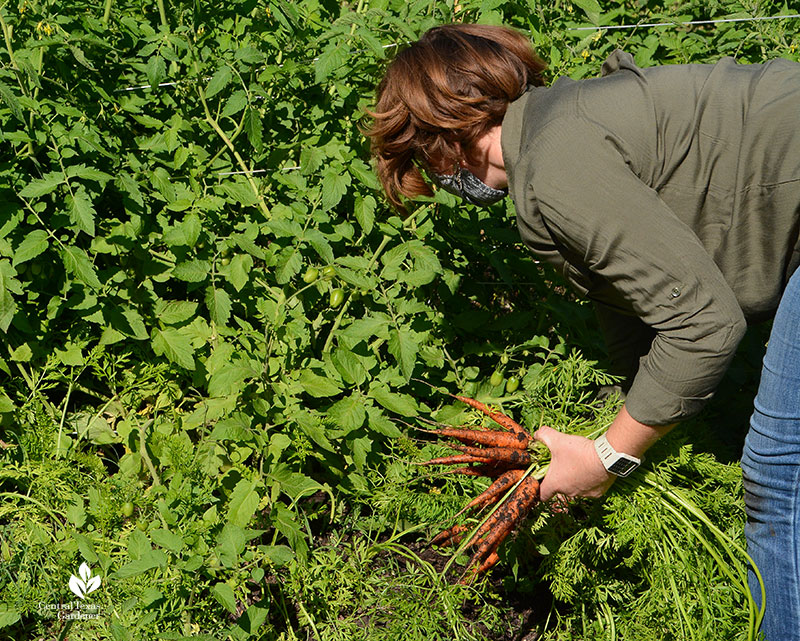
They’re growing prolific indeterminate ‘Juliet’ tomatoes. To uplift rows of these boisterous growers to avoid fungal disease and for easier harvest, they’re weaving them through twine supported by bamboo harvested from a nearby property.
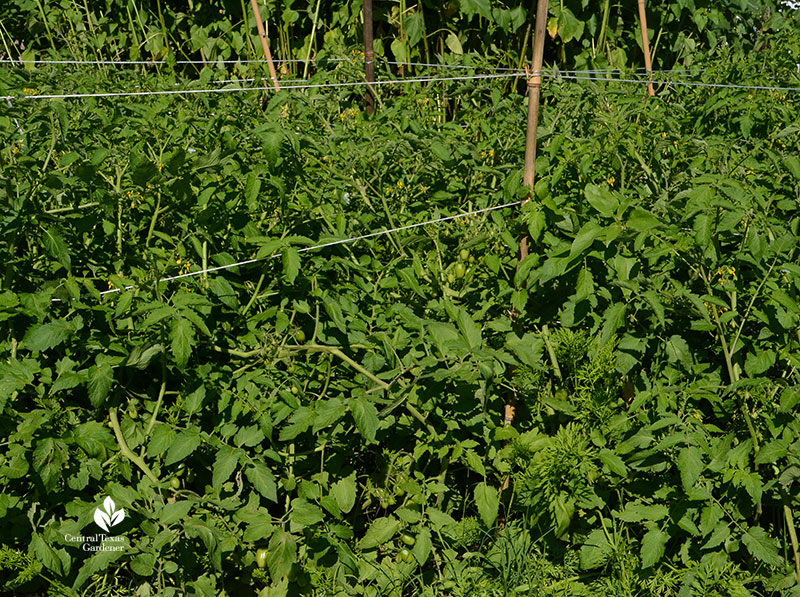
In May, volunteers joined them to add green beans to a Three Sisters garden where corn is already leaping above recently planted squash.
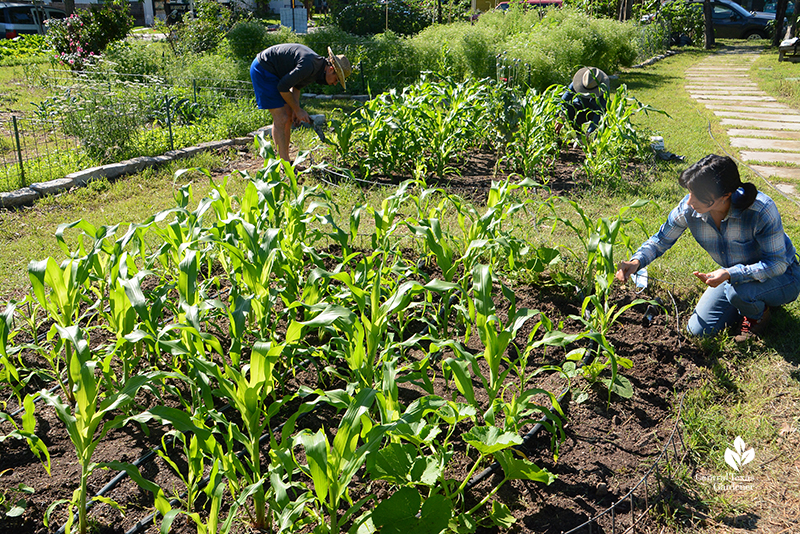
“We love volunteers! One of the best parts of the job is getting to meet community members. Some people have lived in that neighborhood a really long time and are already connected to this piece of land. But other people are just anywhere around Austin. Even if you’ve never gardened before, you can come volunteer at Este Garden,” Anamaria invited. Get details on Instagram @este.gardenatx.
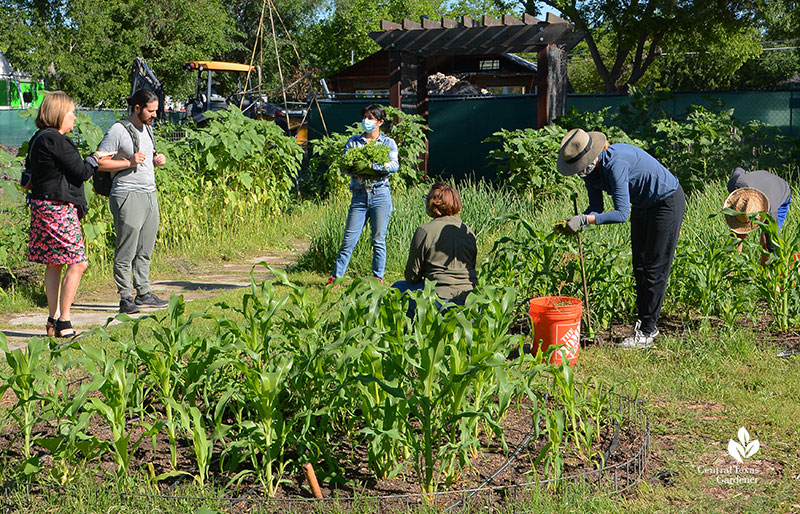
Minnesota native Sarah Nielsen volunteers to adapt her garden knowledge to Texas “rules.” With a bread knife, she swiftly cut through vigorous arugula, its fourth cut-and-come-again harvest since re-seeding a week after the freeze. Now that it’s getting hot, they won’t re-seed again until early fall.
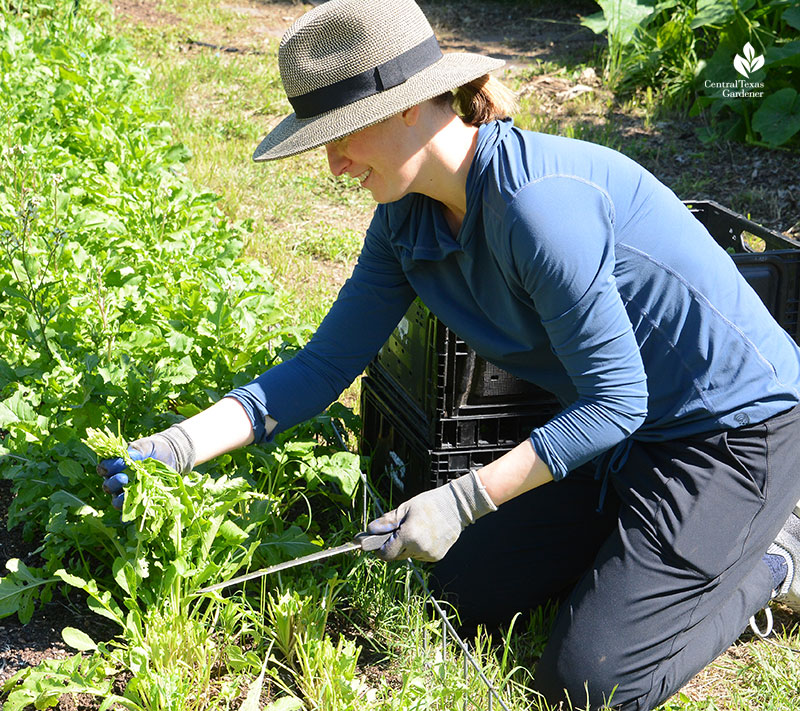
I’m drooling over Sarah’s delicious arugula salad recipe. It’s REALLY complicated, but here goes: Toss together arugula, olive oil, lemon juice, shaved parmesan cheese, kosher salt. Heavenly!
Volunteer Grant Shaffer harvested gorgeous lettuce alongside Lea. Harvests head to Suerte (and next year to Este). Volunteers take home produce when it’s available and Este also donates to Save the Food.
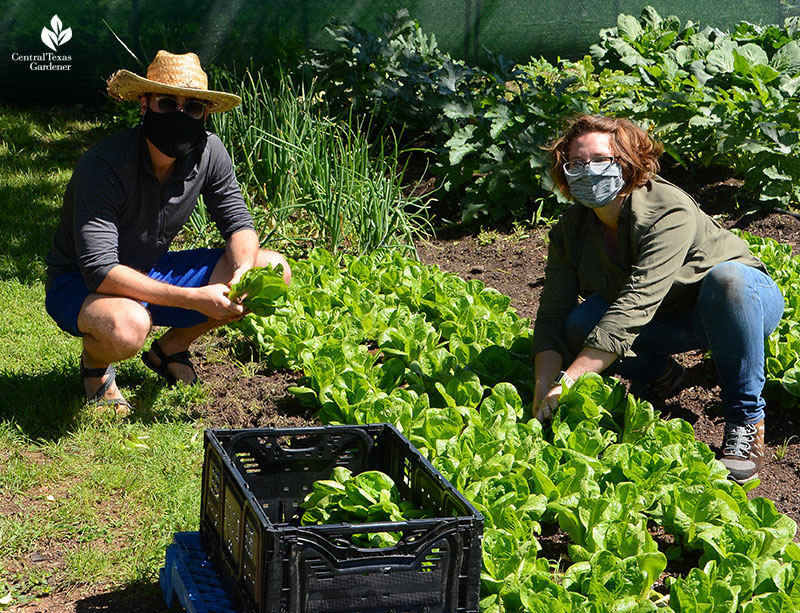
Bees are happy to volunteer as pollinators. So, Anamaria hooked up with female beekeeper Tara Chapman of Two Hives Honey to provide a few hives. Already, neighbors report that they’re seeing lots more bees in their gardens.
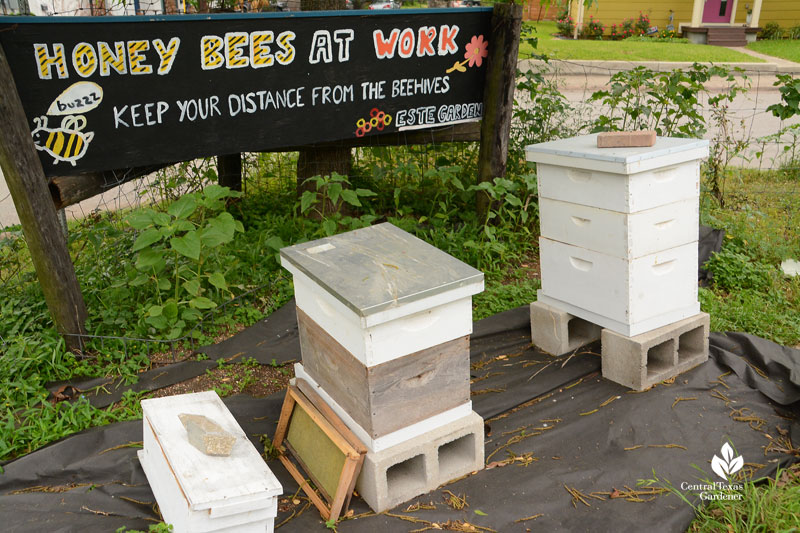
In early spring, blooming trees and annuals like poppies keep bees fed until tomatoes and squash invite pollination.
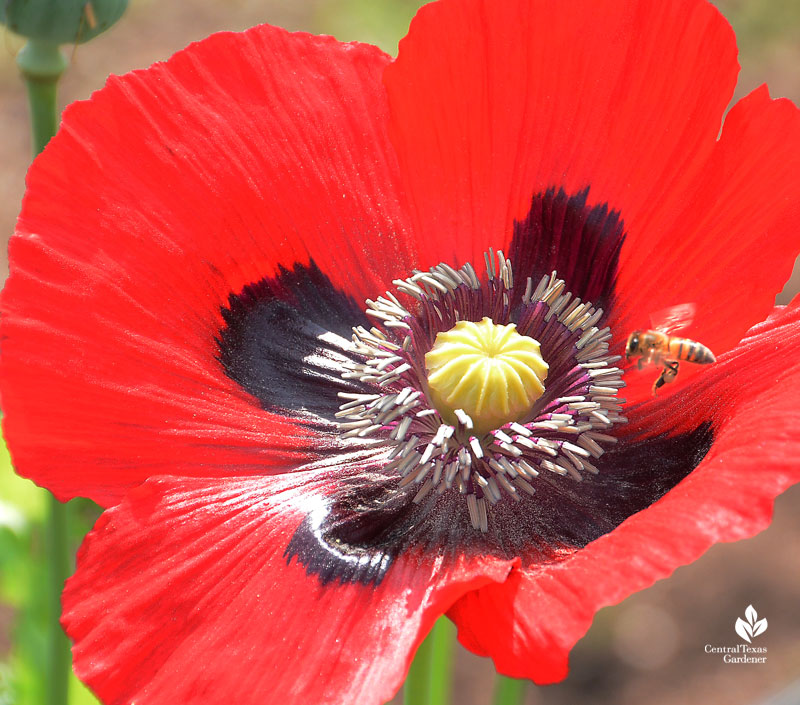
Anamaria and Lea also let cool weather crops like arugula and cilantro bolt (go to flower) for bees and other pollinators.
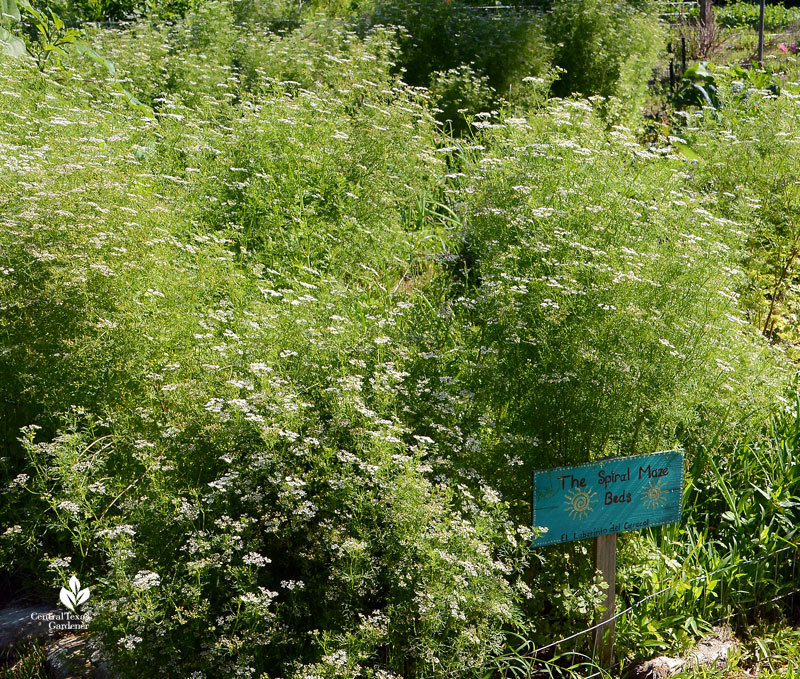
Ladybugs showed up quickly on cilantro to clean up spring pests, like aphids.
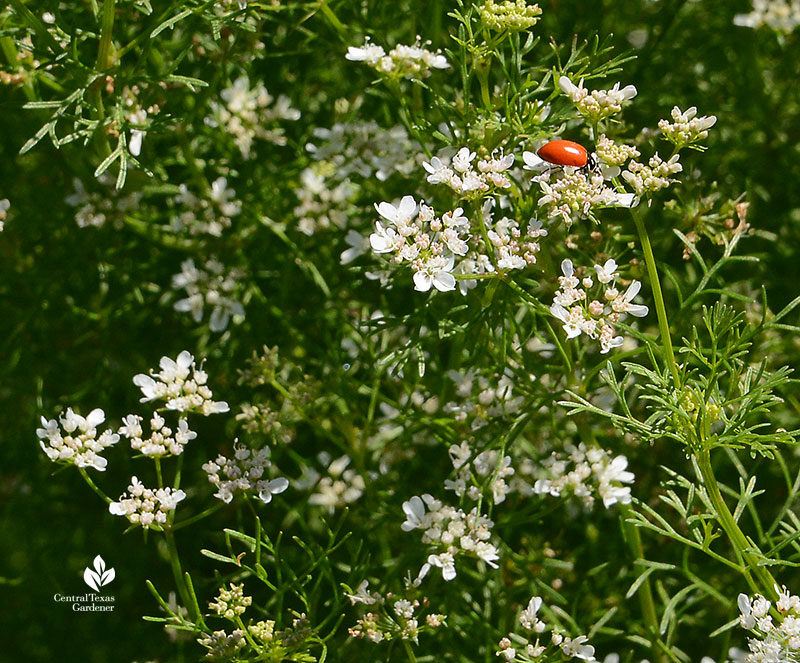
Purple martins, gregarious residents from early spring to late summer, start arriving from South America in February. But their old homes needed updating and cleaning.
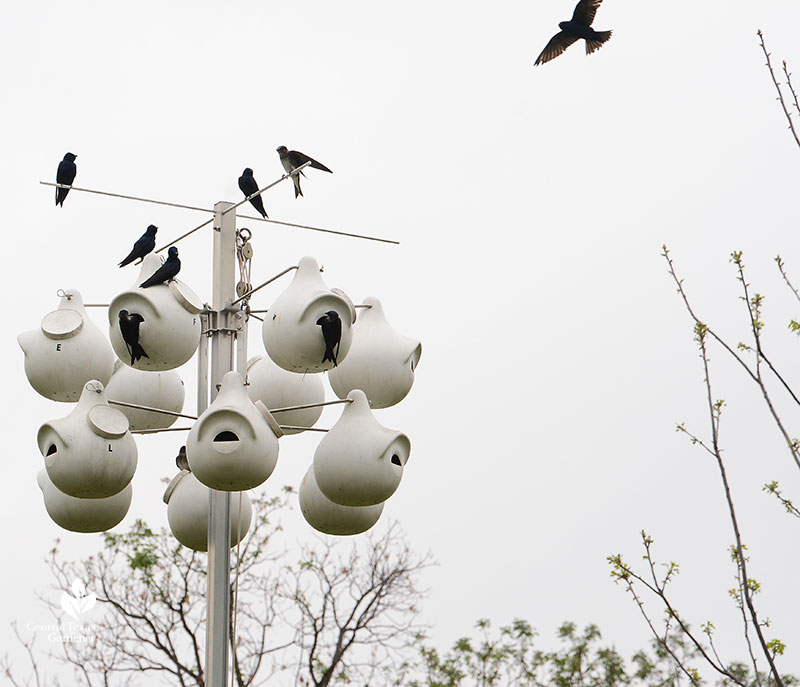
Birdwatchers Kevin Urrutia-O’Reilly and Alex Moreland live nearby and asked Anamaria if they could lend a hand. Then they got in touch with Travis Audubon Society’s Julia and Andy Balinsky to teach them the ropes.
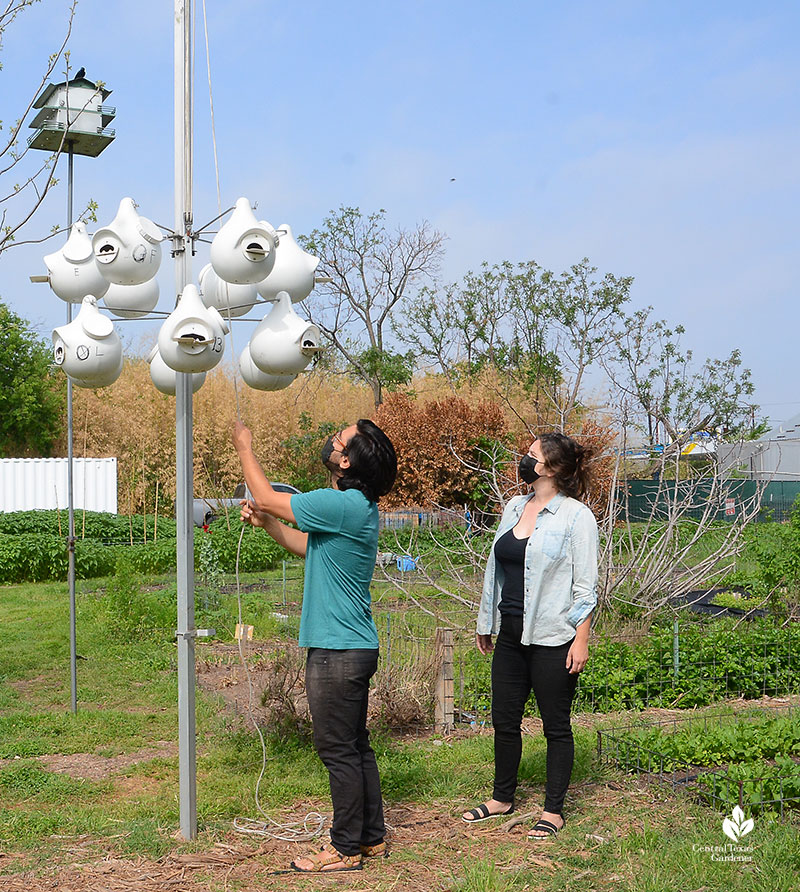
After they cleaned up the compartments and stuffed with pine straw, the purple martins soon moved in to start raising families. Alex reports that as of today they’re up to 4 babies and 71 eggs!
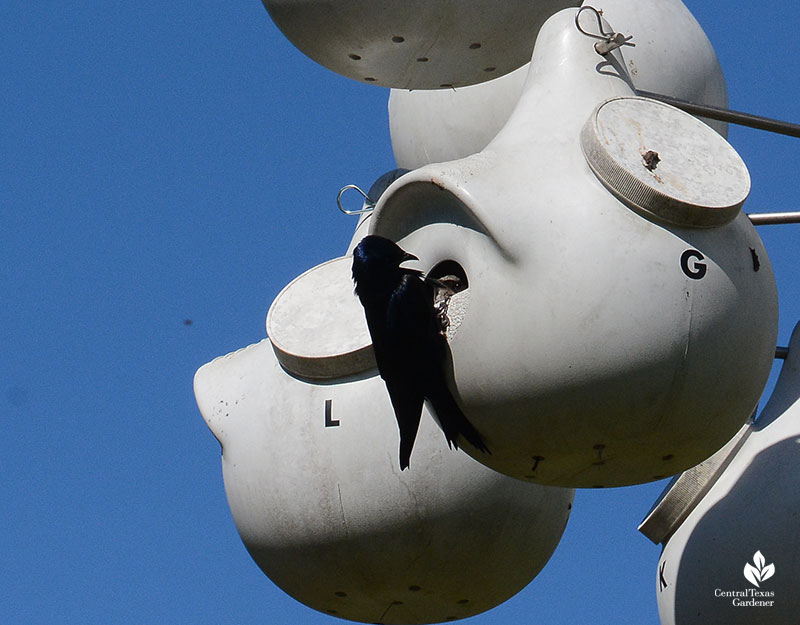
Alex and Kevin come by almost daily to remove invasive sparrow nests and to count eggs and the number of nestlings. At summer’s end, they’ll send their documentation to the Purple Martin Conservation Association.
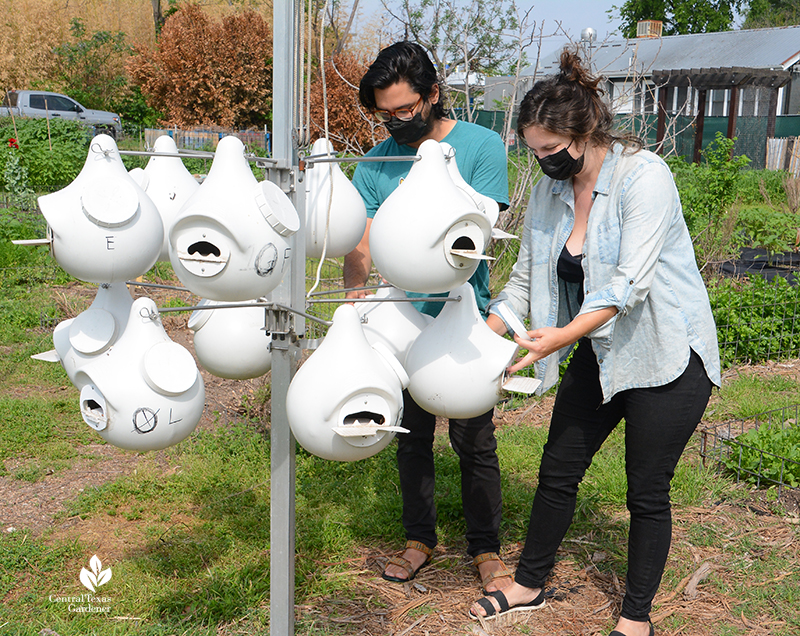
“It’s been a really great way to meet new neighbors that we wouldn’t have met otherwise. Even when we’re not doing nest checks in the evenings we’ll go there and get a drink and sit on the bench and just watch them. They’re so chatty and they swoop around in the air catching bugs and are just so fun to watch,” they noted.
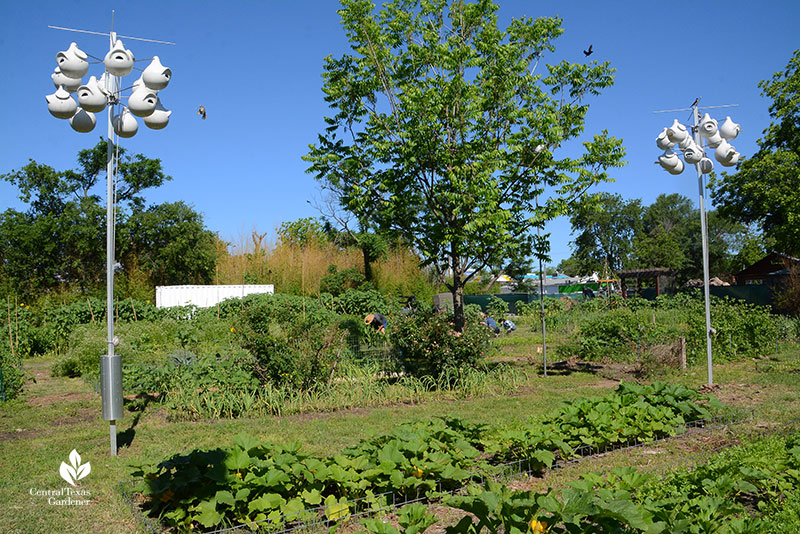
Less than a mile from raucous I-35, this in-town sanctuary’s a harmonious symphony of wildlife, plants, and people.
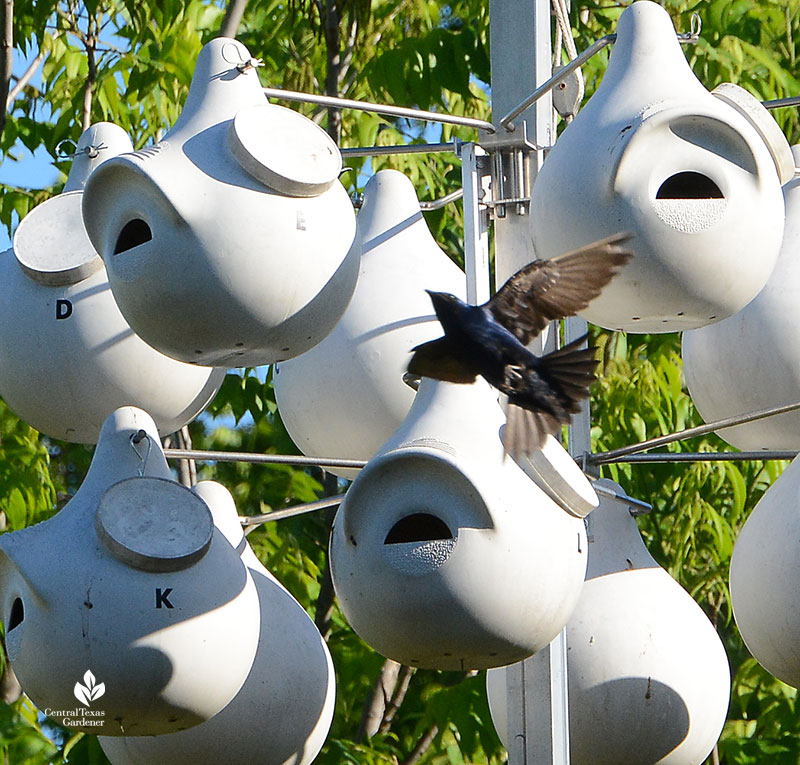
“When you walk into that space, you quiet down for a second and hear the birds chirping and look around and see bee hives and you’re like, ‘Man, there’s like a little world going on here.’” Sam added.
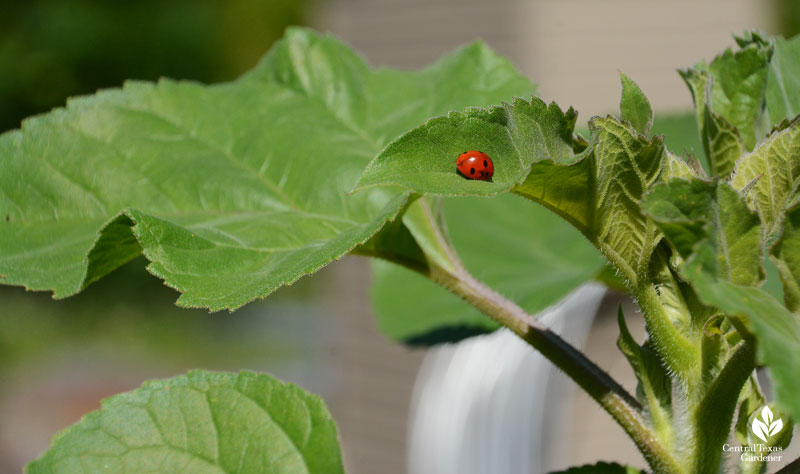
Watching the garden’s rebirth rewards one and all, especially heartfelt for Anamaria. “I feel incredibly honored and privileged to work this space because I know the neighbors have a really strong connection to it already. So many of them this past year have come and said, ‘I’m so happy, the garden’s back.’ That feels like an honor.”
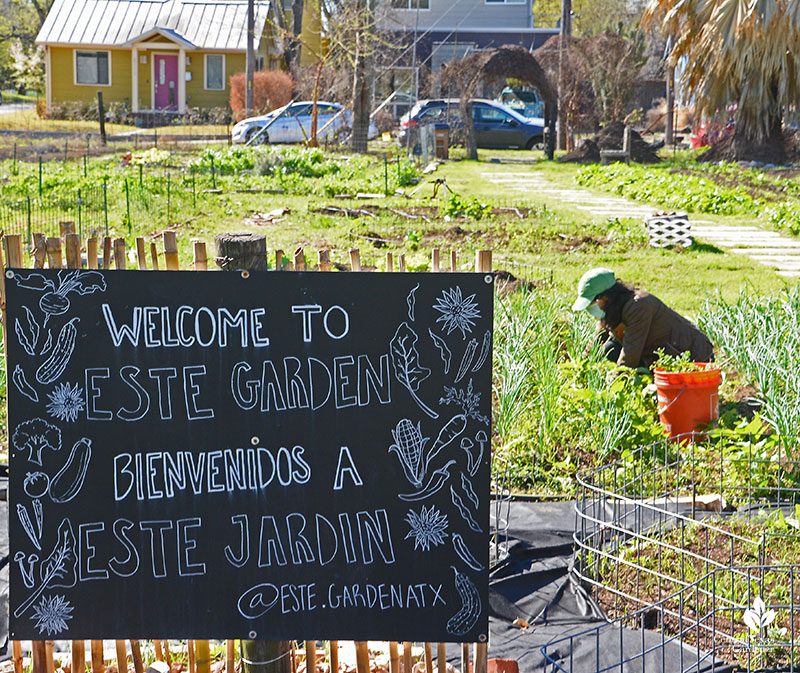
Follow Este Garden on Instagram @este.gardenatx to see what’s growing on and to volunteer.
Watch the story now!
Thanks for stopping by! See you next week, Linda
tags:

